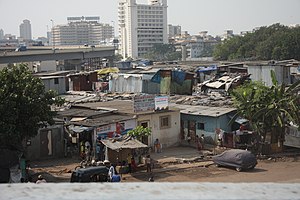
Poverty is about not having enough money to meet basic needs including food, clothing and shelter. However, poverty is more, much more than just not having enough money.
The World Bank Organization describes poverty in this way:
"Poverty is hunger. Poverty is lack of shelter. Poverty is being sick and not being able to see a doctor. Poverty is not having access to school and not knowing how to read. Poverty is not having a job, is fear for the future, living one day at a time.
Poverty has many faces, changing from place to place and across time, and has been described in many ways. Most often, poverty is a situation people want to escape. So poverty is a call to action -- for the poor and the wealthy alike -- a call to change the world so that many more may have enough to eat, adequate shelter, access to education and health, protection from violence, and a voice in what happens in their communities."
There are countries that are high in poverty rate, including Philippines. The Philippines has a fairly high poverty rate with more than 16% of the population living below the poverty line. Because of the many people reliant on agriculture for an income and inequality in wealth distribution, about 17.6 million Filipinos struggle to afford basic necessities.
The poor in the Philippines are most likely self-employed farmers, fishermen, or other agricultural workers and are at high risk of poverty.
The main causes of poverty in the Philippines include the following:
- low to moderate economic growth for the past 40 years;
- low growth elasticity of poverty reduction;
- weakness in employment generation and the quality of jobs generated;
- failure to fully develop the agriculture sector;
- high inflation during crisis periods;
- high levels of population growth;
- high and persistent levels of inequality (incomes and assets), which dampen the positive impacts of economic expansion; and
- recurrent shocks and exposure to risks such as economic crisis, conflicts, natural disasters, and "environmental poverty."
How can the Philippines overcome poverty[edit | edit source]
- Expansion of jobs outside agriculture, government transfers, in particular to qualified poor families through the Pantawid Pamilyang Pilipino Program, and remittances.
- Free school enrollment and tuition for college students.
- Access to clean water and sanitation and electricity must be improved.
- Social safety nets must expand to cover most of the poor.